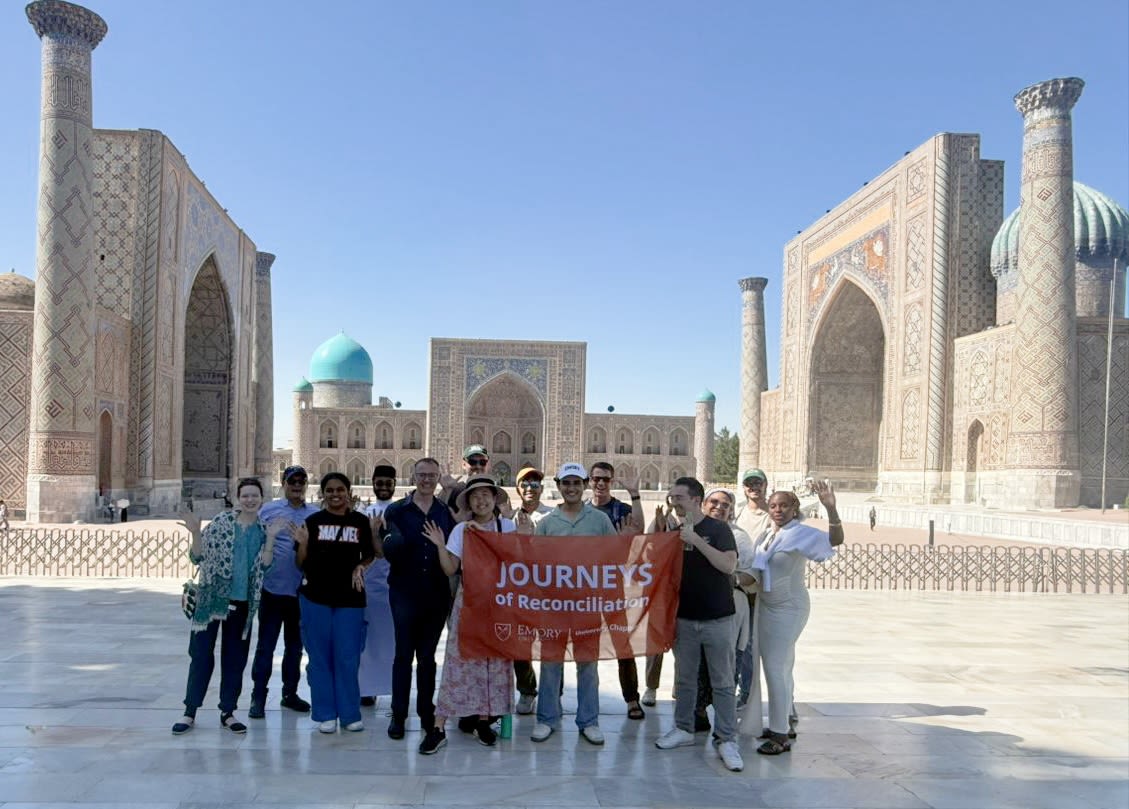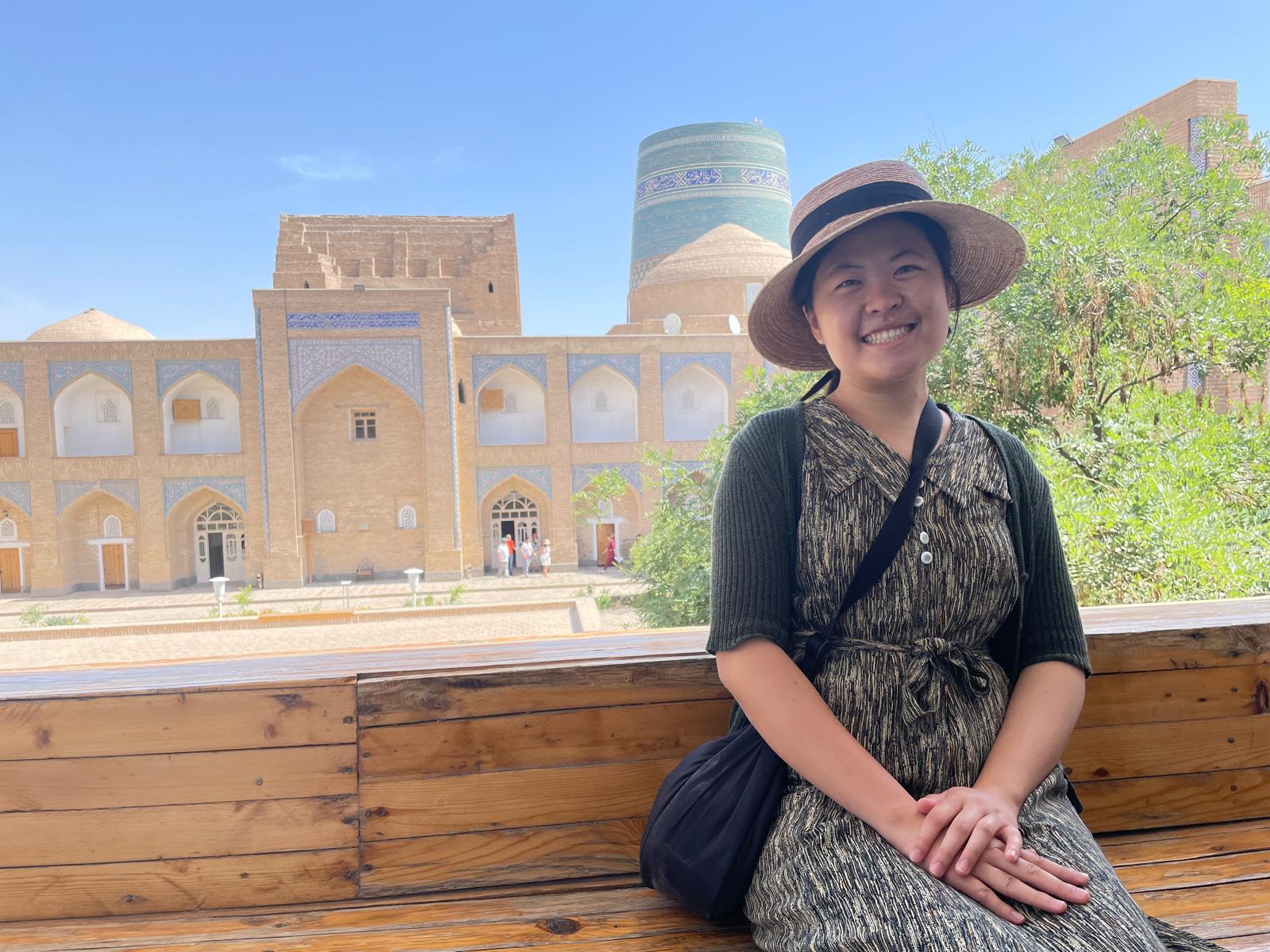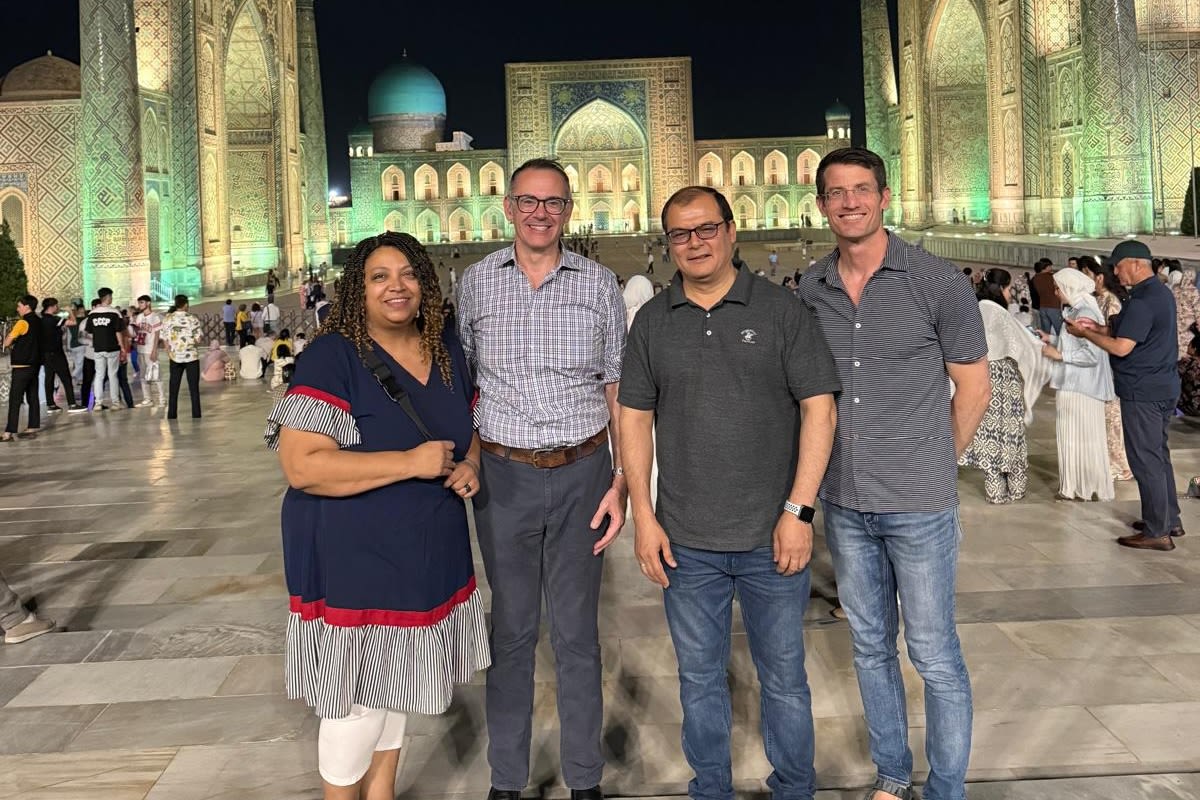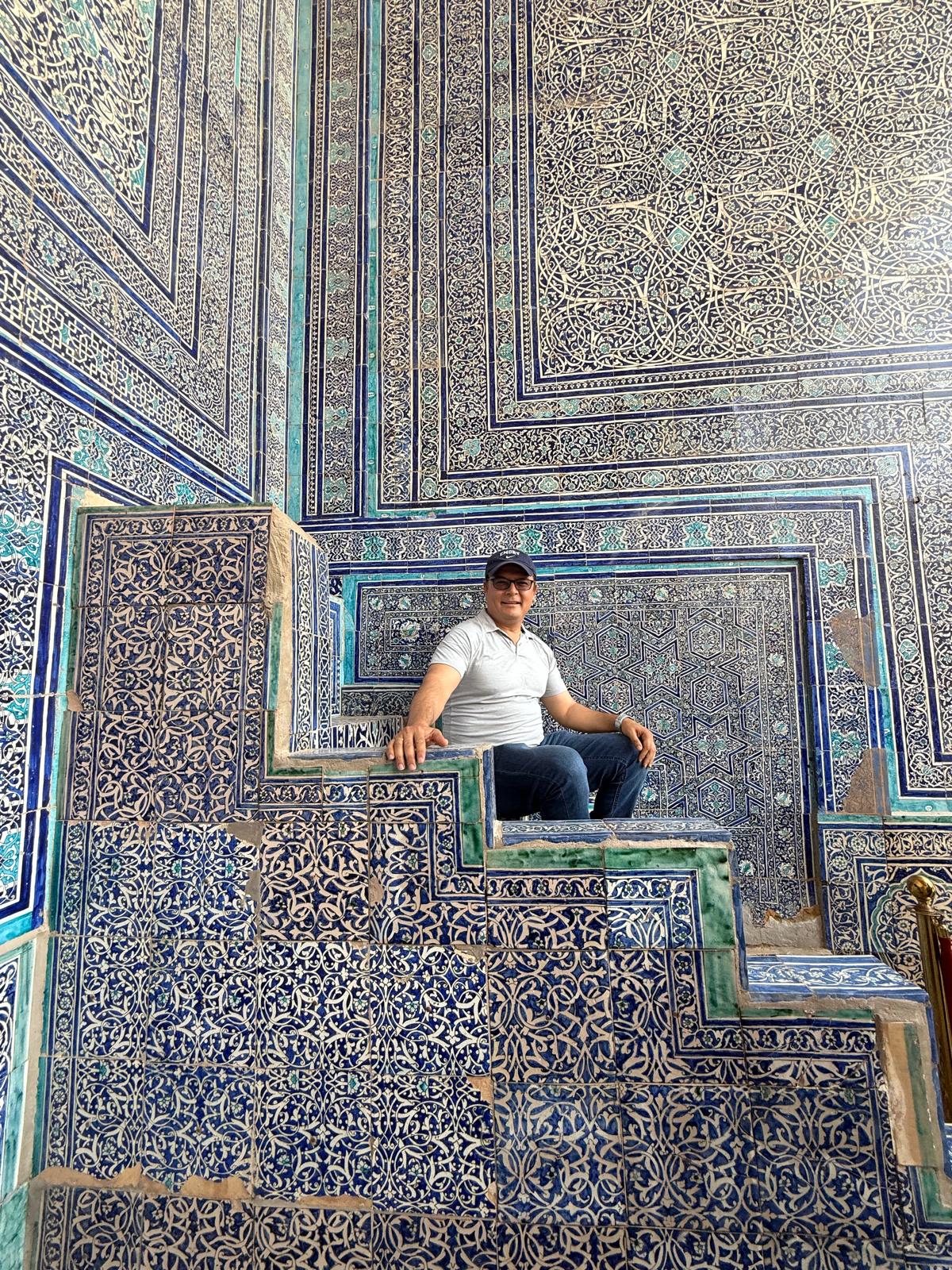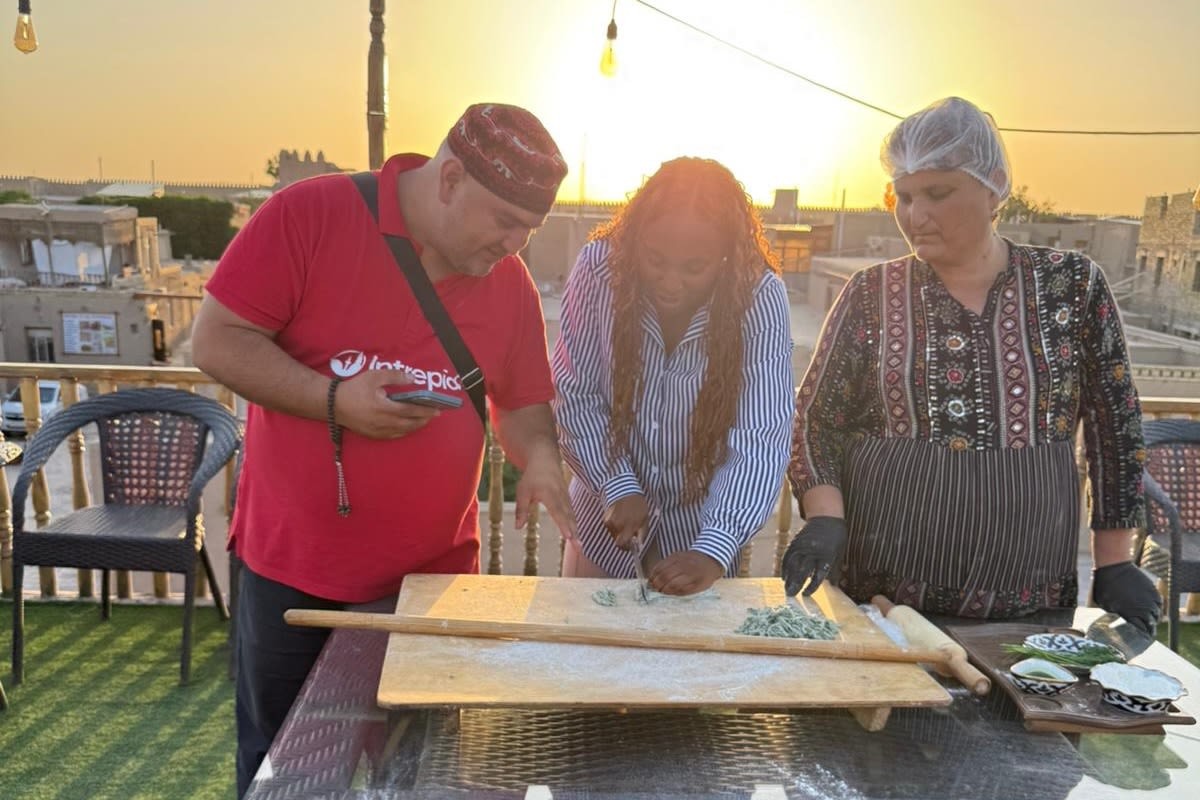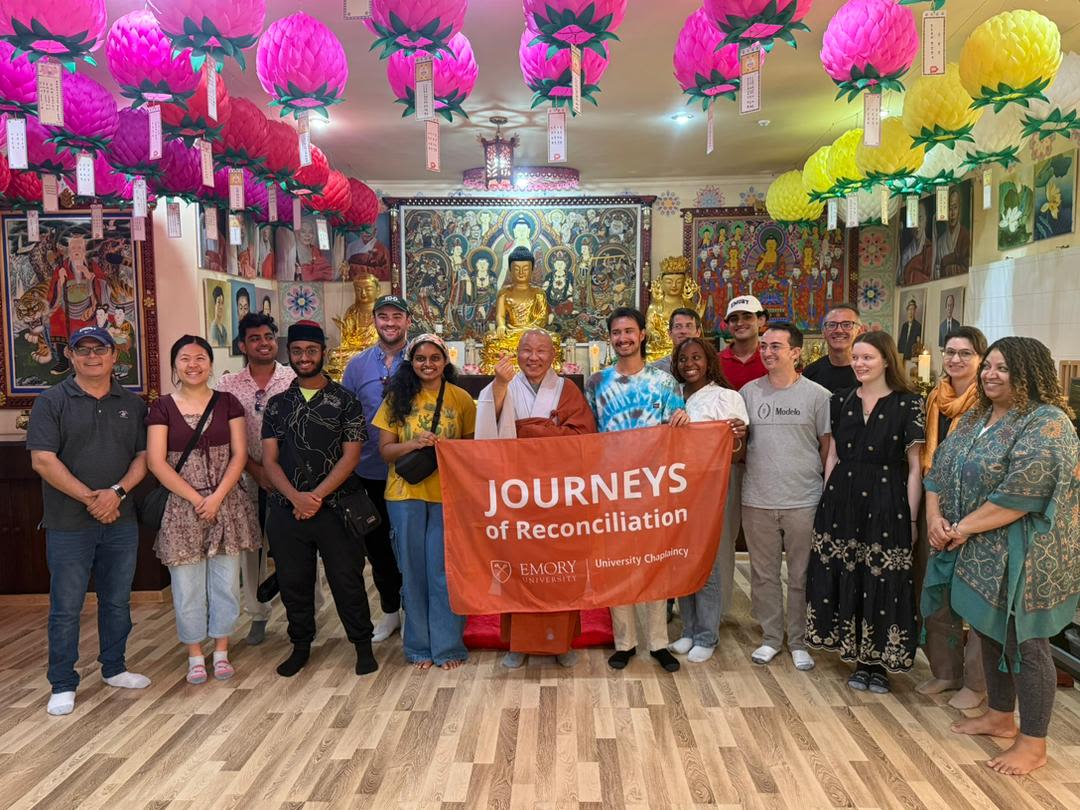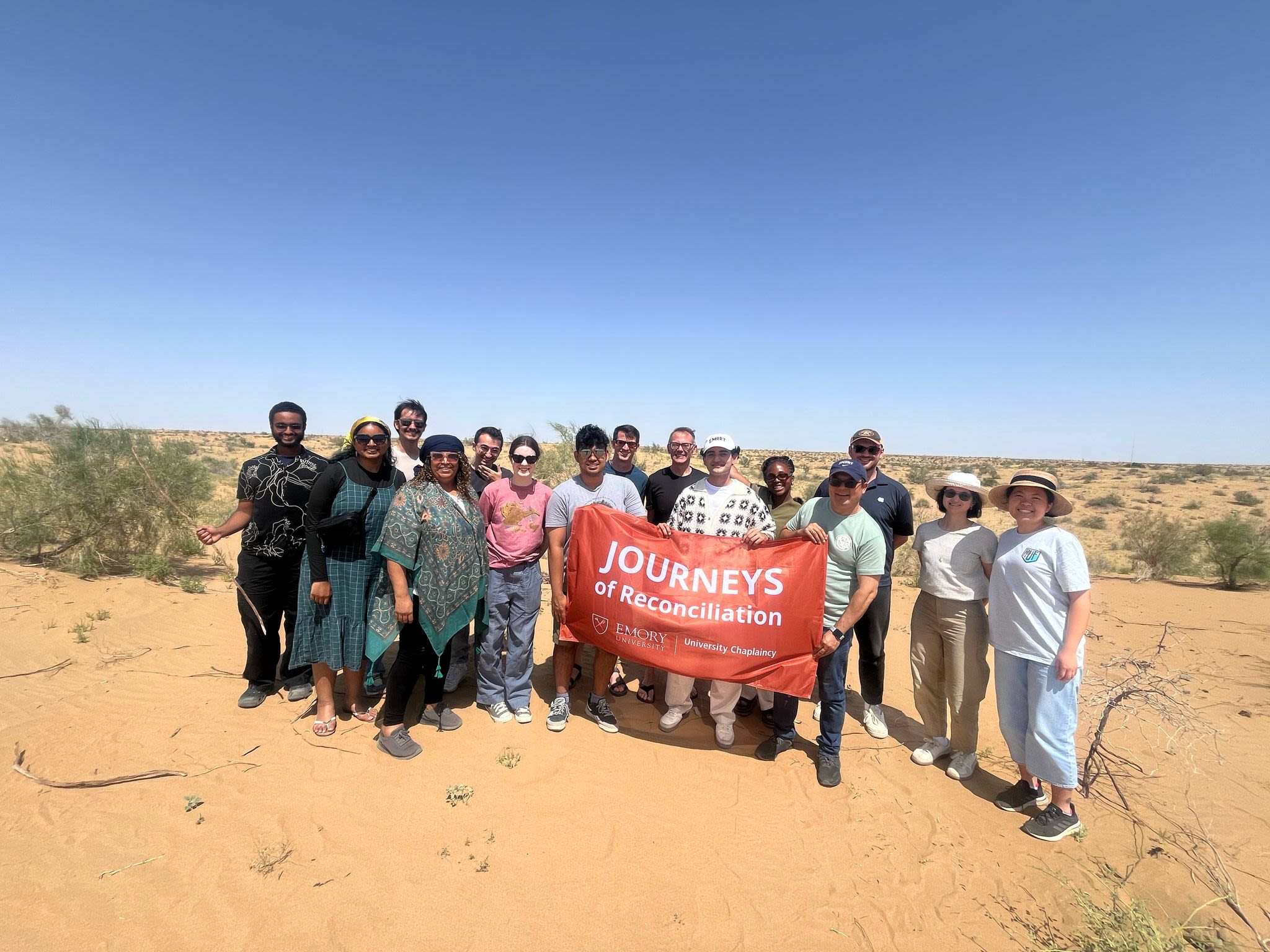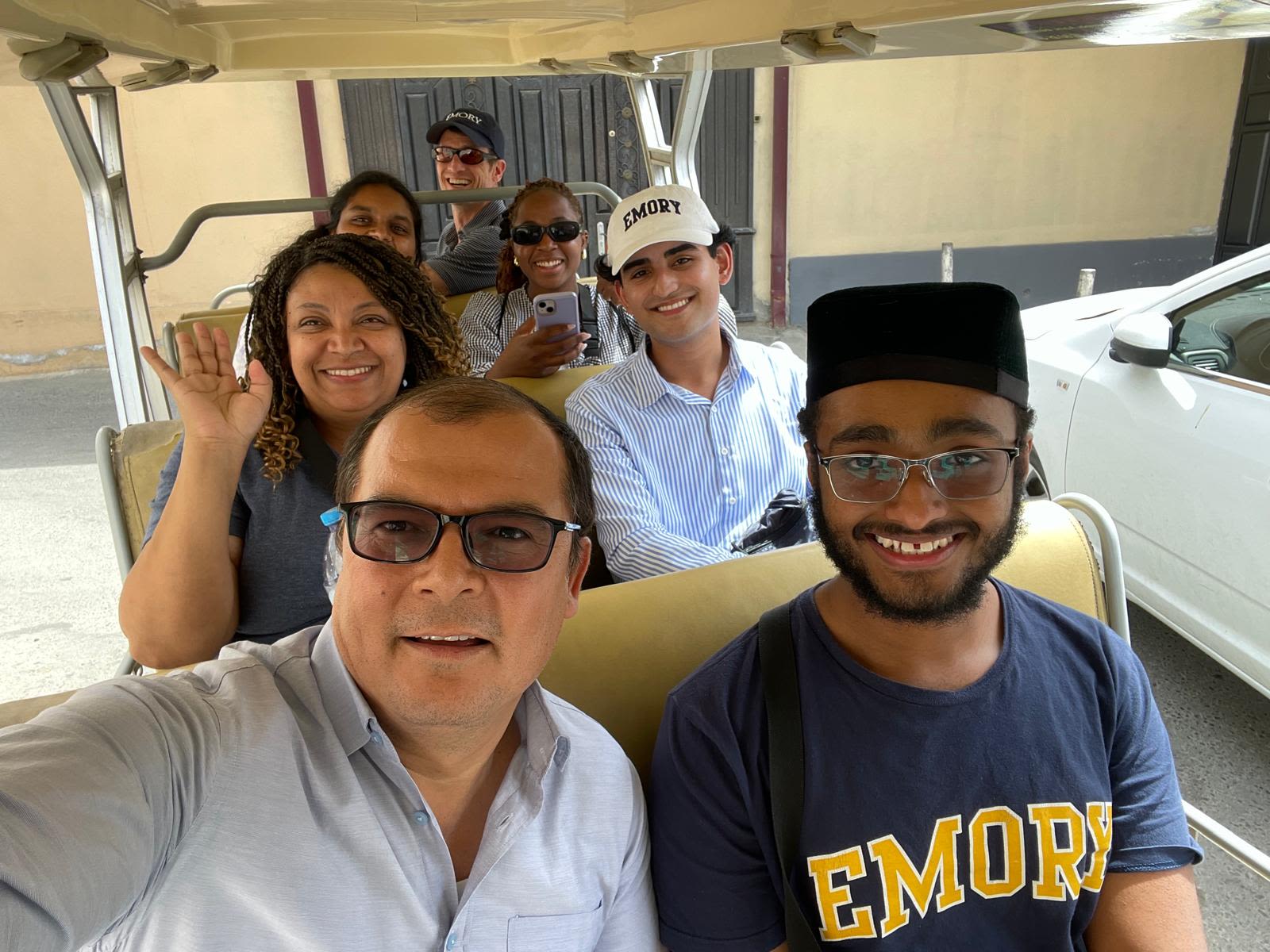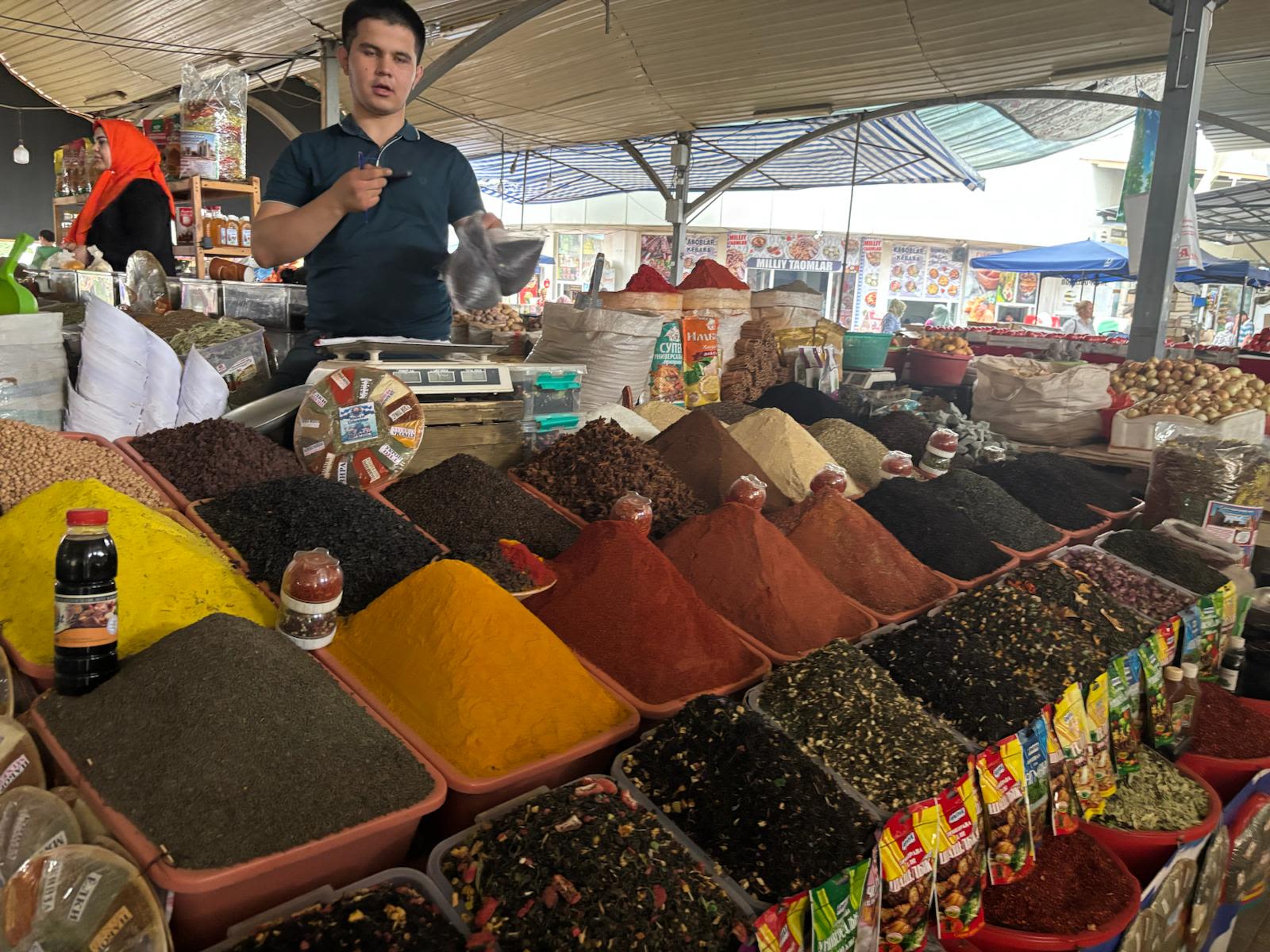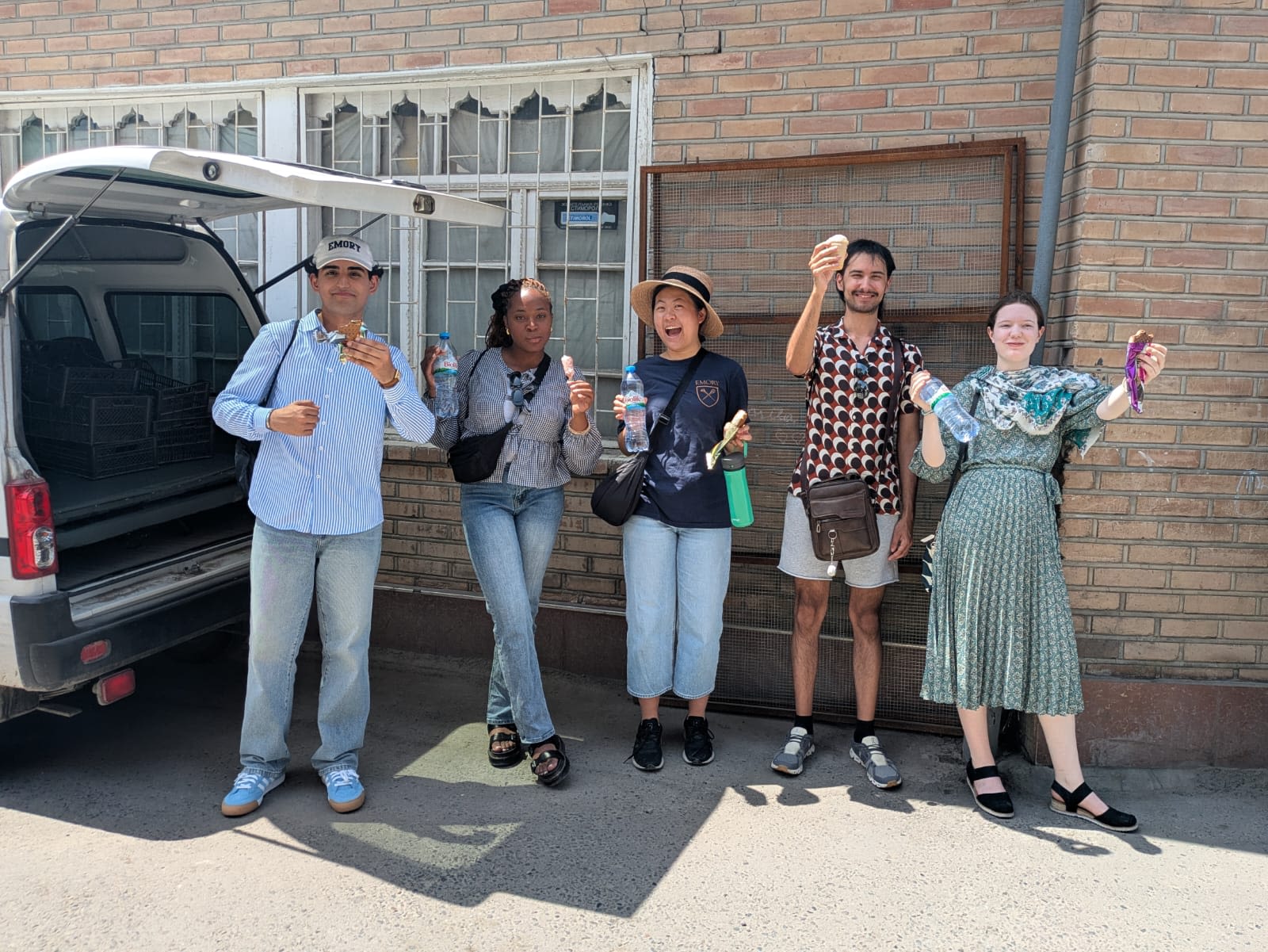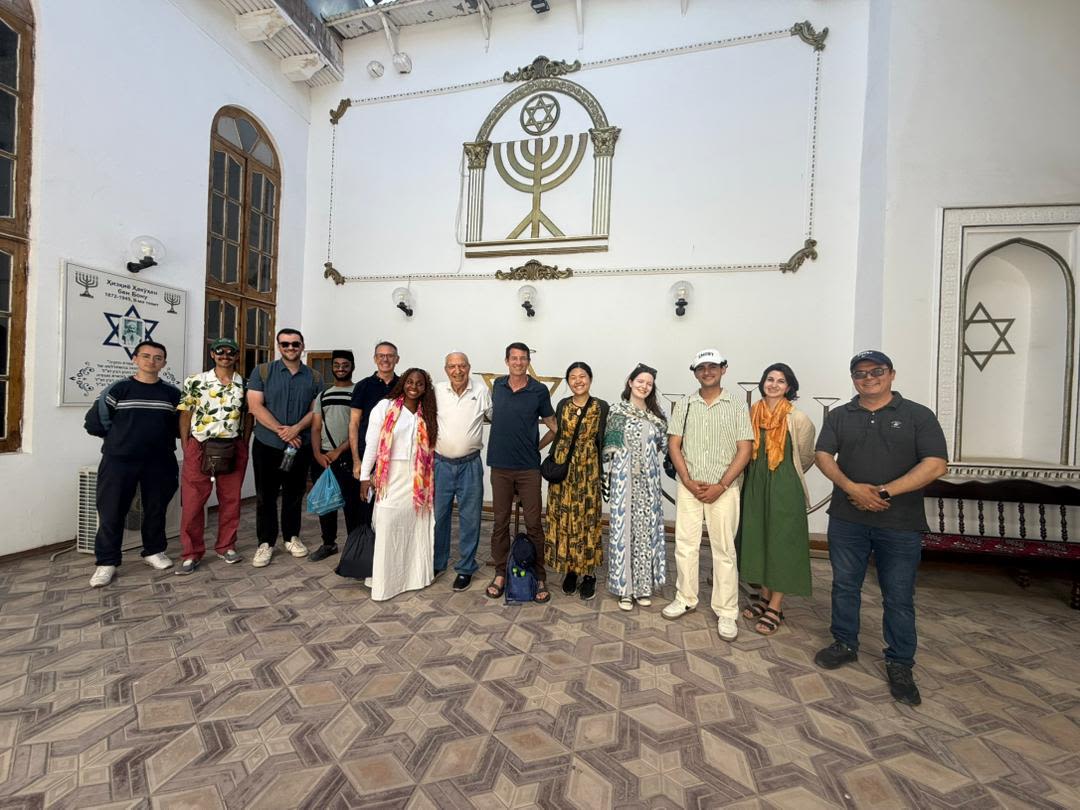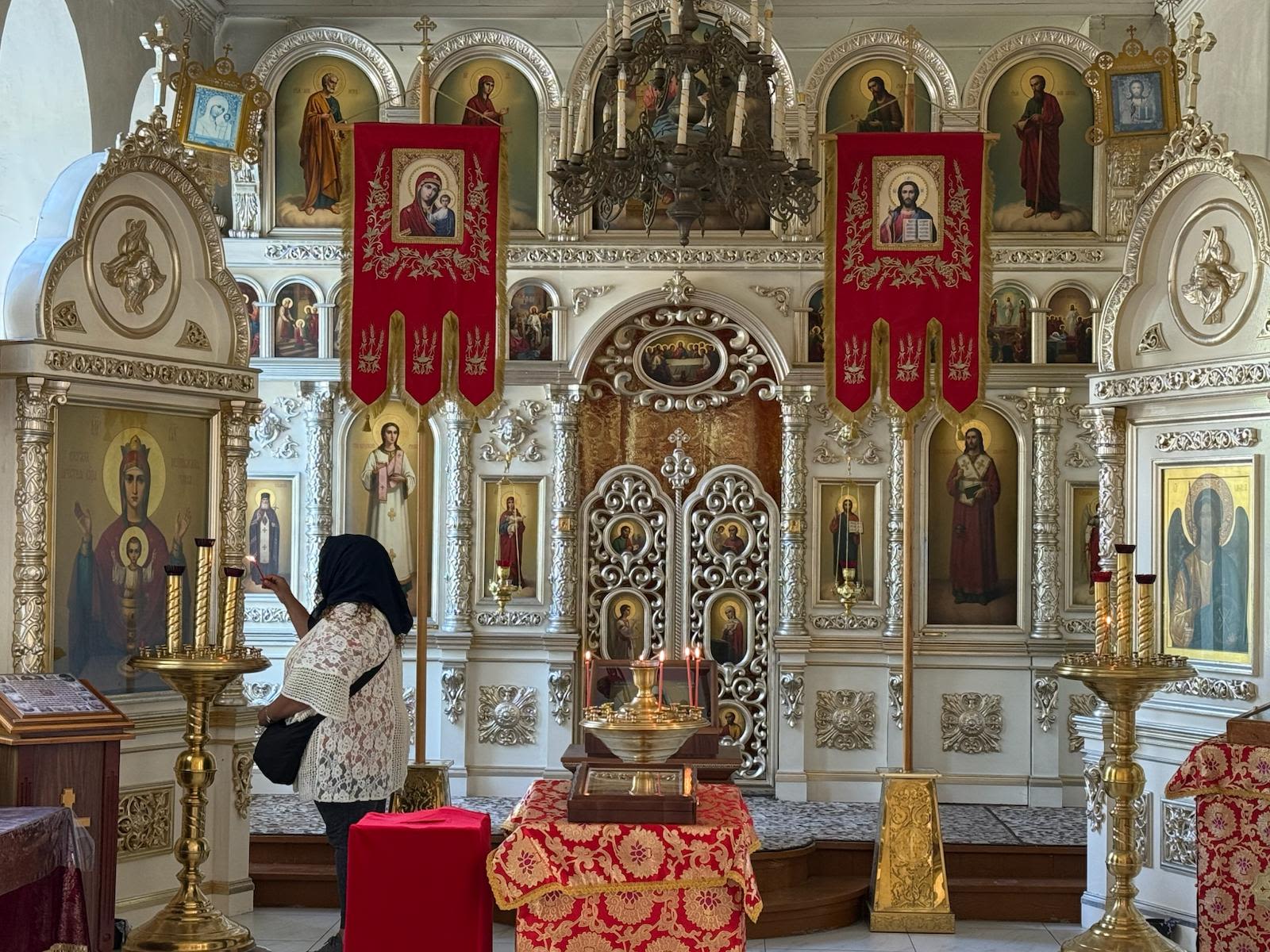Seeking the spirit of the Silk Road
Interfaith journey takes students to Uzbekistan
Aug. 19, 2025 | Emory University
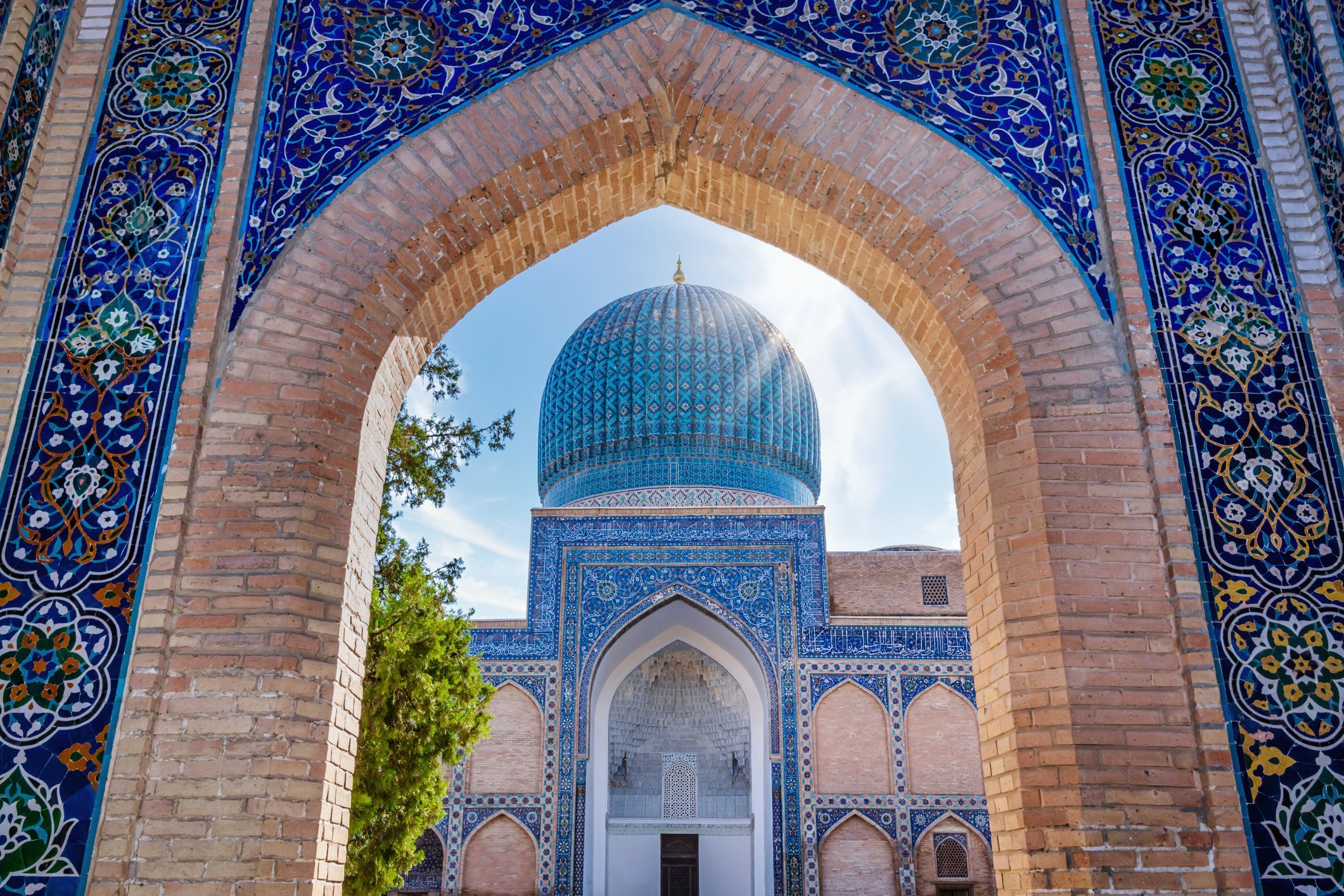
In ancient times, the country now known as Uzbekistan was a major hub along the Silk Road. Nestled in the heart of Central Asia, between the Middle East and the far shores of China, the Uzbek region played a crucial role in expanding intercontinental trade networks.
Merchants once packed the country’s bustling city squares with carts of otherworldly goods — flavorful spices, delicate wares of porcelain and paper, fine fabrics spun from foreign threads, and other products destined for new lands and new people.
In those days, the standard currency was the solidus, a small golden coin with uneven edges minted in the Byzantine capital of Constantinople, now Istanbul. But visitors to Uzbekistan also exchanged a different kind of currency: their cultural practices and, especially, their religious beliefs.
This summer, more than a millennium after the Silk Road’s heyday, 11 Emory students traveled to Uzbekistan to add their own stories to the country’s longstanding history of interfaith dialogue.
“The ancient Silk Road was, in a way, the internet of its time,” says the Rev. Gregory W. McGonigle, Emory’s dean of religious life, university chaplain and co-leader of the trip. “It was a commercial and intellectual superhighway where different traditions were rubbing shoulders and being shaped by one another. Uzbekistan was at the center of that, so it’s the perfect place to look at interfaith relations historically and in the present day.”
The 10-day trip marked the latest chapter for Emory’s Journeys of Reconciliation program, an immersive, interfaith travel learning experience sponsored by the Office of Spiritual and Religious Life. The program, which began in 1986, explores how people from different faith backgrounds live together in peace.
This year's trip was made possible by generous alumni benefactors who are passionate about interfaith work. Additional support came from the Emory Purpose Project and the Candler School of Theology.
Co-led by Rahimjon Abdugafurov, Emory’s Muslim chaplain and an Uzbekistan native, the group visited the major cities of Tashkent, Samarkand, Bukhara and Khiva. They also met with religious leaders and toured more than 20 mosques, synagogues and churches, and a temple.
Emory students carried the Journeys of Reconciliation banner across four cities as they explored Uzbekistan's interfaith traditions.
Emory students carried the Journeys of Reconciliation banner across four cities as they explored Uzbekistan's interfaith traditions.
Over the centuries, Uzbekistan encountered many cultures in the form of invading world powers: the Achaemenid Persian Empire, the Macedonians under Alexander the Great, the Tang Dynasty of China, the Arab Caliphate, the Mongol Empire, the Timurid Empire and the Soviet Union, to name a few.
In 1991, Uzbekistan declared its independence from the Soviet Union and has since been open to the world for travel.
This unique history played a major role in shaping the country’s national identity. Uzbekistan’s 37 million people comprise dozens of different cultures, ethnicities and religious backgrounds, living together in a secular state where Islam is the predominant faith.
“I really wanted Emory students to see how people from different religious traditions interact there,” Abdugafurov says. “What is it that’s holding people from all these faiths together, and what can we learn from it?”
For an interfaith journey, McGonigle adds, it was important to have an interfaith group. Students on the trip identified as Christian, Jewish, Muslim, Buddhist, Hindu and nonreligious. McGonigle and Abdugafurov were joined by co-leaders Obse Ababiya, associate director of global engagement, and Jonathan Crane, a scholar of bioethics and Jewish thought at Emory Center for Ethics.

Learning together
When Ivana Chen looked up from the streets of Samarkand, she saw domes wrapped in tiles of different vibrant blues, all a few shades darker than the sky. “I think it was lapis,” she recalls, trying to pin down one of the hues. “Others were more turquoise.”
The blue-tiled domes, a prominent feature of Uzbek skylines, crown sacred buildings across the country.
Chen, a junior in Nell Hodgson Woodruff School of Nursing, says the beauty of the architecture inspired her to connect with other faiths. She grew up attending a nondenominational Christian church in the Bay Area of California. Through the Journeys of Reconciliation program, she hoped to have conversations that extended beyond what she calls the “spiritual bubble of home.”
She found what she was looking for.
“I was surrounded by people who were passionate and intentional about asking questions of other faiths,” she says of her tripmates. “We were seeking connection, peace and inspiration from the religious places we visited.”
Emory nursing student Ivana Chen sits outside a sacred building adorned with the country's famous blue tiling.
Emory nursing student Ivana Chen sits outside a sacred building adorned with the country's famous blue tiling.
As the trip went on, students even took initiative with the schedule, researching sites to add to the agenda. One was the tomb of the prophet Daniel, a major figure of the Abrahamic faiths, in Samarkand.
When the group emerged from the tomb — an oblong crypt at the foot of a cliff housing an 18-foot marble sarcophagus — the Christian, Jewish and Muslim students compared notes on Daniel’s significance in their religions. It was one of many times they found commonalities across their diverse backgrounds.
“I love seeing how travel can open up a different world for students in a way that builds relationships and connections,” McGonigle says. “They were united in wanting to understand this country and culture and its interfaith environment.”
Elle Rosenthal, a sophomore biology major from Utah who is Jewish, appreciated learning about Islamic funeral rites during a visit to a historic cemetery.
“We heard about a recitation done at people’s graves in Islam,” she says, “and then suddenly everyone in the group goes, ‘Islam does that. What is my religion’s tradition at a grave site?’ In Judaism, you pray the mourner’s prayer.”
Sophomore Muhammad Rizwan, a biology major from Pakistan and Atlanta who is Muslim, says he was moved by the recitation of the Torah at a synagogue in the historic Jewish community of Bukhara.
“Their style was different than I expected,” he says of the speakers’ intonations and rhythms. “They spoke in a Bukharan dialect, and it sounded a lot like reciting the Qur’an in Islam.”
Such similarities — and differences — were the topic of dinner discussions throughout the trip. Crane, who is also an ordained rabbi, recalls an exchange that started at one end of a long table and eventually spread to the other.
The interfaith leaders of Emory's Journeys of Reconciliation trip to Uzbekistan (from left): Obse Ababiya, Gregory W. McGonigle, Rahimjon Abdugafurov and Jonathan Crane.
The interfaith leaders of Emory's Journeys of Reconciliation trip to Uzbekistan (from left): Obse Ababiya, Gregory W. McGonigle, Rahimjon Abdugafurov and Jonathan Crane.
“We were having a very intense conversation about what we liked about our own traditions and what we liked about other people’s traditions,” he says. “The conversation began to grow from three or four people to all of a sudden six or eight. And it was this very human, interfaith conversation that could not have happened as equitably in another setting.”
For Chen, some of the trip’s most resonant moments occurred through impromptu discussions with tripmates on walks or bus rides between sites.
“I really appreciated that everyone approached the trip from a standpoint not of arguing which religion is ‘right,’ but just with the curiosity to learn,” she says. “I never felt pressure to defend my own faith. It was always an open discussion, and everyone was very accepting and wanting to know more. Of course, it also made me reflect on my own faith background — why I believe what I believe and how my culture has contributed to my spiritual life.”
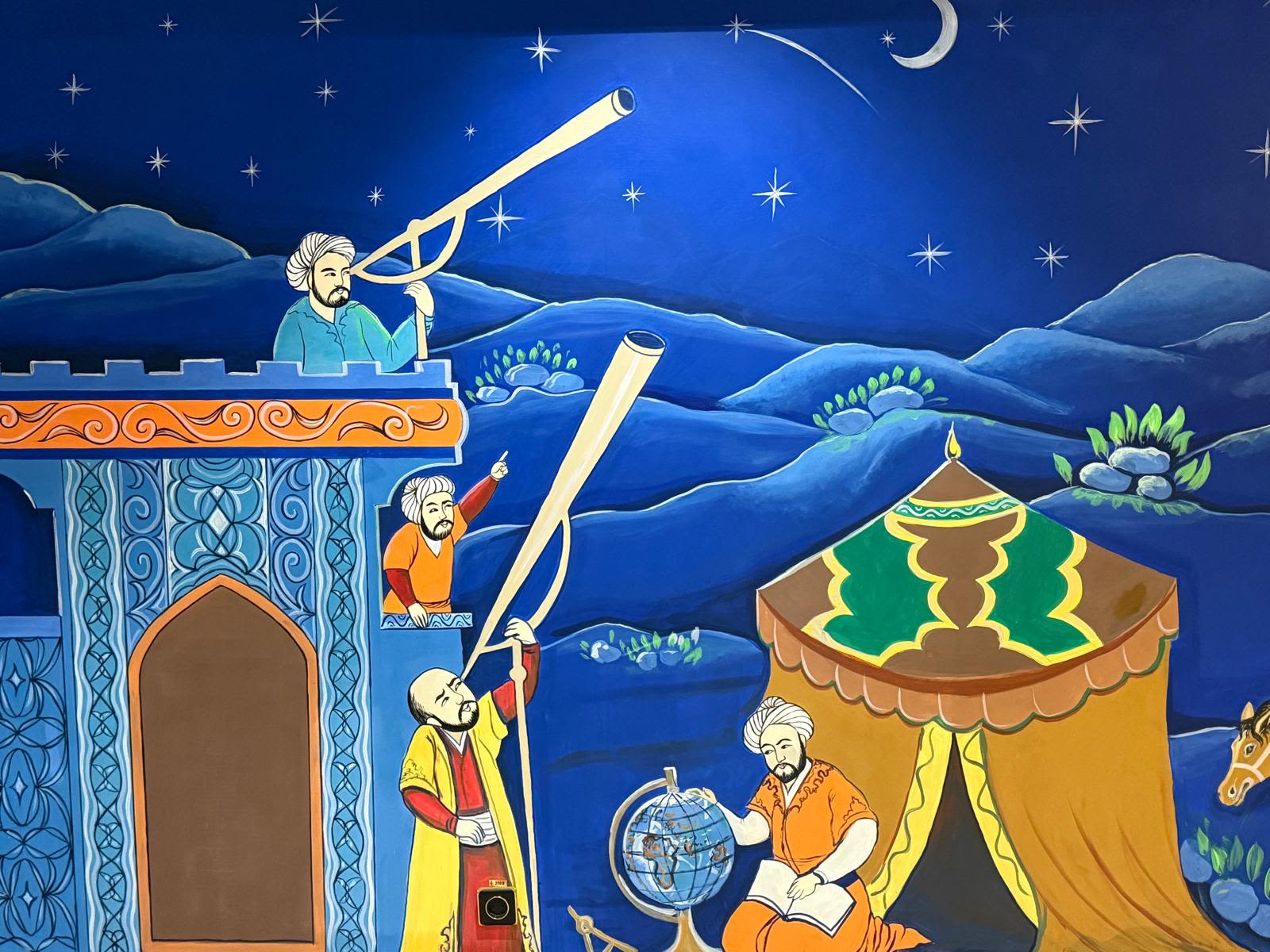
Cultural delights
While the streets offered new and exciting sites for students, each turn was full of old memories for Abdugafurov. As he looked around, he thought about his upbringing in the small town of Uychi during the Soviet era. The country was closed to the West then; it’s open now.
“There’s a reconciliation factor there,” he says. “American students and American people weren’t able to see these places. I don’t know of any Emory group that’s ever traveled to Uzbekistan. With this trip, we opened the gates for the Emory community to what was a shuttered and cordoned-off land.”
The trip was a homecoming for Abdugafurov, who enjoyed sharing his culture and knowledge with the Emory community.
The trip was a homecoming for Abdugafurov, who enjoyed sharing his culture and knowledge with the Emory community.
The first official Emory cohort received a warm Emory welcome. In Tashkent, the group shared a multi-course meal at the home of Nodir Ayupov, an Uzbek alumnus of the Goizueta Business School, and learned about everyday family life in the country.
Rizwan says it was one of the best meals of the trip. It was only rivaled by a hands-on pasta making class in Khiva, when students rolled up their sleeves — and the dough, which was packed with dill and other spices.
Dill, Chen says, was in all her favorite foods, especially the hearty rice dish plov and the popular soup shurpa, full of lamb, potatoes and vegetables.
Samhitha Dasari, a Hindu student pursuing a master’s at the Rollins School of Public Health, noticed TVs on trains were often playing Uzbek Bollywood dance shows. She enjoyed the unexpected encounter with her family’s Indian culture.
“It inspired me to do a little research,” she says. “During the Soviet era, there was a boycott of American films, and that’s where Bollywood came in. People in the Soviet Union, and then Central Asia, became big fans of those movies.”
Alanna Finn, a senior neuroscience and behavioral biology major, center, hand rolls strips of dill-infused pasta, an Uzbek staple.
Alanna Finn, a senior neuroscience and behavioral biology major, center, hand rolls strips of dill-infused pasta, an Uzbek staple.
Even for a native like Abdugafurov, there was still much to learn.
“Before this trip, I had no idea there was a Buddhist temple in Tashkent,” he says. “It’s beautiful.”
Inside the temple’s shrine room, the shoeless students received a gentle hand-to-head blessing from the presiding monk, who then led them in a meditation. The group asked for a blessing from each of the many spiritual leaders they met along the way.
“The students were so open to it,” Abdugafurov recalls. “It was such a highlight for me personally.”
Lessons for home
Crane believes the lessons from the trip will stay with the students and percolate throughout their experiences at Emory.
“Uzbekistan is a place at the crossroads of civilizations, and students come to Emory at a crossroads in their own lives,” he says.
“They’re trying to figure out what they want to study and how to pursue their life goals. The trip was a chance to put those questions into this larger landscape, with Uzbekistan’s unusual history — the relationships between religious communities, the languages, the politics, the topography. It was a wonderful way to not only encounter the proverbial other, but to come face to face with one’s own self.”
The trip inspired Rosenthal to set new goals for the fall. She plans to visit Abdugafurov when in need of advice.
“He told me when students come to his office, he pours them a cup of tea,” she explains. “He says holding something really grounds you.”
She hopes to model Abdugafurov and what she calls Uzbekistan’s “hospitality culture” by hosting interfaith student gatherings on campus, where she will serve tea to her classmates.
Chen says learning about different religious backgrounds will be useful in her nursing career.
“I learned a lot about Judaism, Buddhism and Islam that I can bring into my knowledge as a future health care worker,” she says. “These lessons will be helpful when my patients are religious, or they have certain requirements or traditions they follow. And it will benefit the patients when I’m having conversations with them.”
For Chen, “The trip was about changing your mindset going into the rest of your life.”
Story and design by Daniel Christian. Photos courtesy of Emory Office of Religious and Spiritual Life. Lead image by Getty Images, Mlenny.
To learn more about Emory, please visit:
Emory News Center
Emory University


